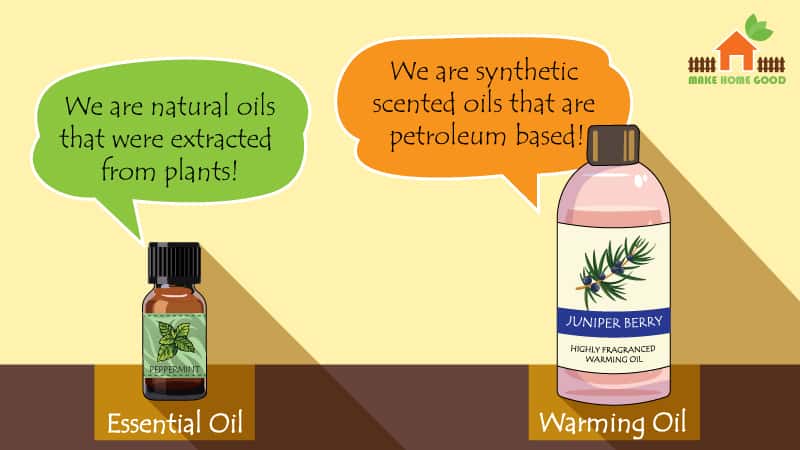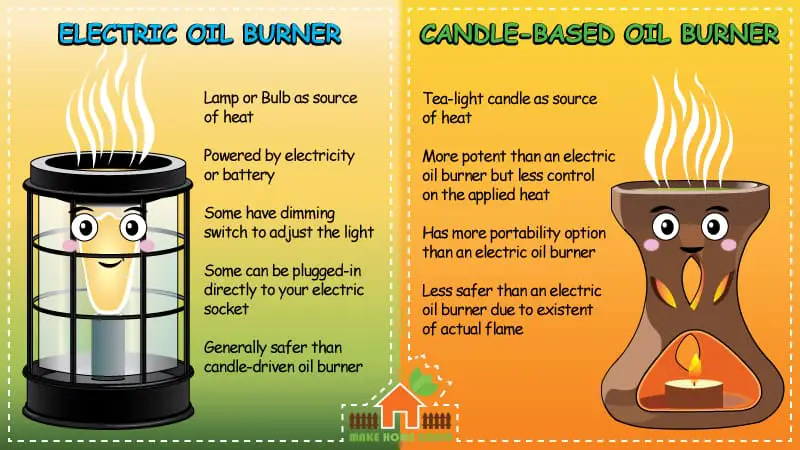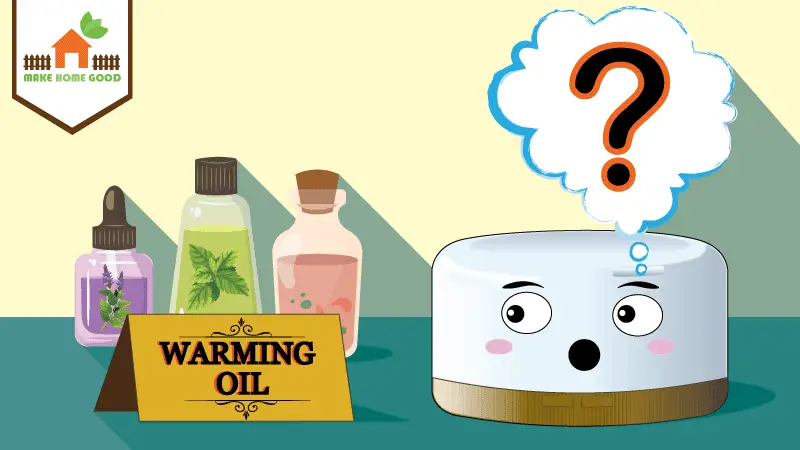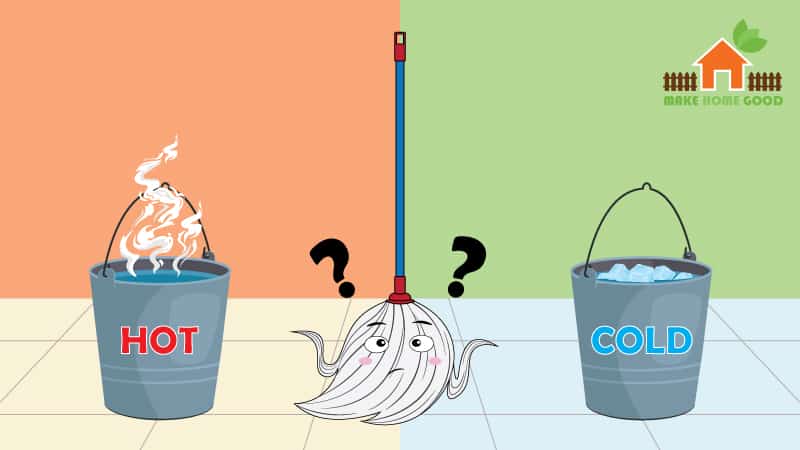I asked some essential oil enthusiasts, and I had no idea there were cooling and warming oils. I’m aware that this stuff serves a variety of functions, particularly those related to relaxation and soothing. I’m interested in the warming oils because I’ve never known the difference between essential oils and warming oils.
What is a warming oil? Warming oils are synthetic scented oils that are petroleum-based and have been cut or diluted with carrier oils, similar to how incense sticks are made. Warming oils are also known as burning oils or hot oils. You may recognize warming oils by their greater scent and lack of therapeutic efficacy when compared to essential oils.
Now that you have a better understanding of what a warming oil is, let’s study more about its application and other aspects of it.
Table of contents
What is warming oil used for?
Warming oils, and its uses. Warming oils may be used in four ways: first, as a topical treatment for your skin, second, as a carpet cleaner by combining baking soda with 10 drops of oil, third, as a room spray, you just need to fill your spray bottle with water and add 2-3 drops of oils, and lastly, to perfume your home using oils burners or diffusers, which is most likely what we all want to do with our warming oils.
- As a topical treatment
- As a carpet cleaner
- As a room spray
- As home perfume, using oil burners or oil diffusers
Aside from this, highly fragranced warming oil can also be used to make scented candles and other scented items you can use at home.
Are warming oils natural like essential oils?
Warming oil is used to perfume your home without expecting any therapeutic benefits. Unlike essential oils which are derived from plants, flowers, and other natural materials, there is nothing natural about a warming oil; it is made up of petroleum-based chemicals that produce the scent.
According to experts the three main raw ingredient of warming oils or fragrance oils are essential oils, nature identicals, and man-made fragrances. So, if you just want a really strong smell inside your home that makes you feel great, go with warming oils.
Just like essential oils, you may also combine different scents of warming oils to achieve mixed aroma of your oils. Using oil warmers or burners the fragrance of the warming oil will be heated and dispersed into the air, making your home smell fresh.

Can you use essential oils as warmer oils?
Yes, you can definitely use some essential oils as warmer oils as they can also provide warming effect with the additional therapeutic benefits. They can be used to ease pains and aches especially during winter season.
Checkout these Essential Oils that you can use as Warming Oils.
| Essential Warming Oils | Description | Price |
|---|---|---|
| Pepper | Pepper is an essential warming oil because it has a high concentration of volatile oils, including capsaicin, which gives it its heat-producing ability. | Check Price here |
| Oregano | Oregano is an essential warming oil because it has a high concentration of thymol, which is a natural preservative. | Check Price here |
| Wintergreen | Wintergreen is an essential warming oil because it contains methyl salicylate, which is a natural oil that is extracted from wintergreen leaves. | Check Price here |
| Cinnamon | Cinnamon is an essential warming oil that is also scented warming oils because of its sweet, woodsy scent. | Check Price here |
| Clovebud | Clove Bud is an essential warming oil because of its high content of clove oil. Clove oil is a natural compound that is obtained from the flower buds of the clove tree. | Check Price here |
| Ginger Root | Ginger root is an essential warming oil because of its high levels of gingerols, which are responsible for its warming and fragrant properties. | Check Price here |
| Juniper Berry | Juniper Berry is an essential warming oil. It is a popular choice for diffusers because its strong, woodsy scent fills a small room quickly. | Check Price here |
| Thyme Thymol | Thyme is an essential warming oil because of the high levels of thymol, a terpene found in many essential oils. | Check Price here |
| Peppermint | Peppermint oil is an essential warming oil because of its high concentration of menthol. | Check Price here |
| Spearmint | Spearmint is a an essential warming oil that is derived from the mint plant. The oil is composed of terpenes, which are the essential oils that give the oil its fragrance. | Check Price here |
| Nutmeg | Nutmeg is an essential warming oil that is derived from the seeds of the nutmeg tree. The oil is extracted by cold pressing and has a warm, woodsy smell. | Check Price here |
| Cardamon | Cardamon is an essential warming oil that is derived from the flower cardamom. This oil has a warm, woodsy scent that is perfect for use in aromatherapy. | Check Price here |
| Marjoram | Marjoram is an essential warming oil because it is rich in terpenes, which are the compounds responsible for the aroma and flavor of essential oils. | Check Price here |
| Rosemary | Rosemary is an essential warming oil because it has a high concentration of terpenes, which are the molecules that give plants their scent. Terpenes are also what give essential oils their aroma. | Check Price here |
Read the next section about how to use warming oils for burners and oil diffusers for additional information.
How to use warming oils for burners?
What is oil burners? Oil burners can either be electric or candle-based. Both types operate using heat to disperse the scent of the warming oil into the air. They can be used with essential oils as well.
An electric oil burner uses lamp or bulb powered by electricity or battery as the source of heat. They come in various decorative styles, shapes and features more control and settings for customizing. I find them more safer than a candle-based warmers since there’s no actual flame present. Thus, minimizing the likelihood of fire occurrence.
Furthermore, some of the electric oil burner features dimming switch which can adjust the brightness of the lamp or bulb consequently adjusting the heat applied to your oil. This way you can prolong the fragrance dispersion and oil consumption of your burner. This can even save you more electrical energy.
For a candle-based oil burner, tea-light candles are commonly used as the heat source. The candle is placed directly below the bowl of the burner, which then heats the warming oils that will disperse the aroma throughout your room.
I suggest you choose the unscented tea-light candle so as to release the pure fragrance of your warming oil instead of mix scent. Using candle-driven oil burner is more potent but you also have less control with the applied heat.

Here are the steps to take and the items you’ll need to use an electric or candle-based oil burner:
- Prepare your warming oils or fragrance oils and carefully read it’s directions of use to know the proper amount of oil to use. Please note that some brand of warming oils do not require dilution of their product.
- In case, you’ll need to dilute your warming oil, use carrier or cutting oil with the same amount of warming oil you have prepared. So your mixture has to be 50% of the warming oil and 50% of the carrier or cutting oil.
- Pour the proper amount of warming oil to the bowl of your burner that can either be glass, ceramic or metal material.
- You’ll need a heat source:
- With an electric oil burner you have already a built-in heating system, which is commonly bulb or lamp. It is replaceable and usually it comes with dimmer to customize the bulb’s brightness.
- With a candle-based oil burner, the most commonly used type of candle is the tea-light candle. Before lighting the candle, make sure to straighten up its wick and then carefully place it directly under the bowl of your burner.
- Place your oil burner in area under room temperature where there’s steady flow of air, on a clear, stable and high heat resistant surface away from any combustible materials like curtains or papers.
- Make sure to check your burner from time to time to see if the level of the oil is still sufficient enough. Snuff out the fire of your candle while the bowl is not completely empty of oil as this will cause smoke and eventually ignite.
- Remember not to touch the oil or bowl of your burner until it has fully cooled down.
When using oil burners, keep in mind that they might be a fire hazard. Aroma therapists recommend that the bowl of the burner be deep so you can pour greater amount of oil but not exceeding the recommended level to avoid spill over that might also cause fire. Moreover, before adding more oil to your burner, do not forget to first extinguish the fire of your candle.
Another problem that you might face with oil burners is that the oil residue can taint the bowl and spark a fire. Remember that oils can cause fires, which is why you should always use water and wash your oil burners after each use to avoid oil residue in the bottom of your burner’s bowl. You may also use vinegar to easily remove tough oil residue.
You may also want to read: Can you sleep and leave diffuser on all night?
How to use warming oil in diffusers?
Can you use warming oils in diffuser? It is not recommended to use warming oil for essential oil diffusers since it has carrier oils that may cause damage to the diffuser. Remember that warming oil are synthetic unlike essential oils, using them in a diffuser to be dispersed into the air and to be directly inhaled will definitely cause an impact to your health with daily exposure.
Aside from that, the residue from the warming oil will also affect the essential oil’s volatile potency if you use them again in your diffuser. Thus, it is best to diffuse the warming oil with it’s intended equipment.
Using a proper diffuser designed for warming oils will save you from complications and in the long run you will not waste your essential oils. Just make sure to follow the recommended amount of oil to be used in the diffuser.
3 things to consider when choosing the right modern oil burner or warmer for your home
When shopping for a modern oil burner or warmer for your home, it’s necessary to consider these 3 things 1. the warmer’s size, 2. the source of heat, and 3. the style.
The size of the warmer is critical since you want to ensure that it will fit in the available space.
Consider the sort of heat source since you want to ensure that the warmer is compatible with the type of heat source you have available.
The design is critical since you want to ensure that the warmer complements your home’s decor.







